Lifestyle
Uncover the Ultimate Tanning Bed Lotions
Know the key ingredients and types of tanning bed lotions to achieve a flawless glow—discover the secrets behind the best products!
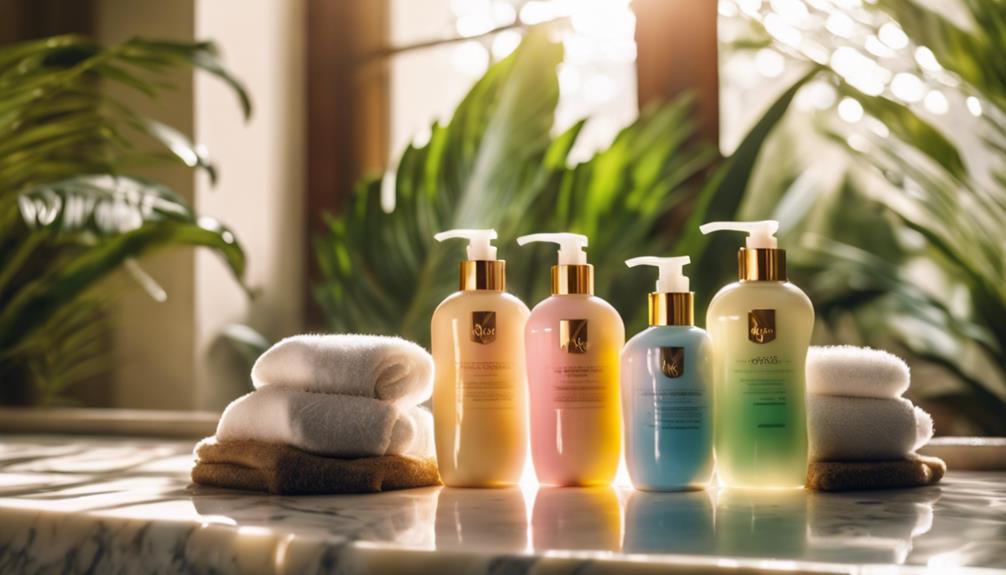
To uncover the ultimate tanning bed lotions, focus on three key factors: ingredients, types, and skin type. Look for tanning accelerators like tyrosine and DHA for faster results and deeper color. Moisturizing agents, such as aloe vera and coconut oil, keep your skin hydrated during tanning. Choose between bronzers for instant color or natural formulas for eco-friendly options tailored to your needs. Remember to evaluate your skin type—sensitive, dry, oily, or normal—when selecting a product. With the right combination, you'll enhance your tanning experience and achieve that coveted glow. Discover more tips to elevate your tanning game!
Key Takeaways
- Look for tanning accelerators with tyrosine and DHA for enhanced melanin production and immediate bronzing effects.
- Choose moisturizing lotions containing aloe vera and coconut oil to prevent dryness and keep skin hydrated during tanning.
- Opt for natural formulas that are cruelty-free and organic for a safer and more eco-friendly tanning experience.
- Consider combination products that offer multiple benefits, catering to diverse skin types and tanning needs.
Tanning Lotion Ingredients
When choosing a tanning lotion, it's essential to understand the key ingredients that can enhance your tanning experience and nourish your skin.
Look for tanning accelerators like tyrosine, which stimulates melanin production for a deeper tan, and DHA, a common bronzing agent that develops color.
Additionally, moisturizing ingredients such as aloe vera, coconut oil, and cocoa oil help prevent dryness and keep your skin hydrated.
Antioxidants like vitamin E protect against environmental damage while improving skin texture.
Finally, consider fragrances that can elevate your tanning experience, offering delightful options from floral to tropical scents.
Types of Tanning Lotions
There are several types of tanning lotions available, each designed to meet different tanning needs and preferences. Understanding these can help you choose the right product for your desired results.
| Type | Purpose |
|---|---|
| Accelerators | Quick tanning results |
| Bronzers | Immediate color enhancement |
| Natural Formulas | Cruelty-free and organic options |
Accelerators like B.tan UV Tanning Bed Lotion speed up the tanning process, while bronzers, such as Millennium Tanning Solid Black 100X, provide instant color. If you prefer natural options, products like Ed Hardy Coconut Kisses cater to your eco-conscious choices. Each type offers unique benefits, so select what fits your tanning goals best!
Application Techniques
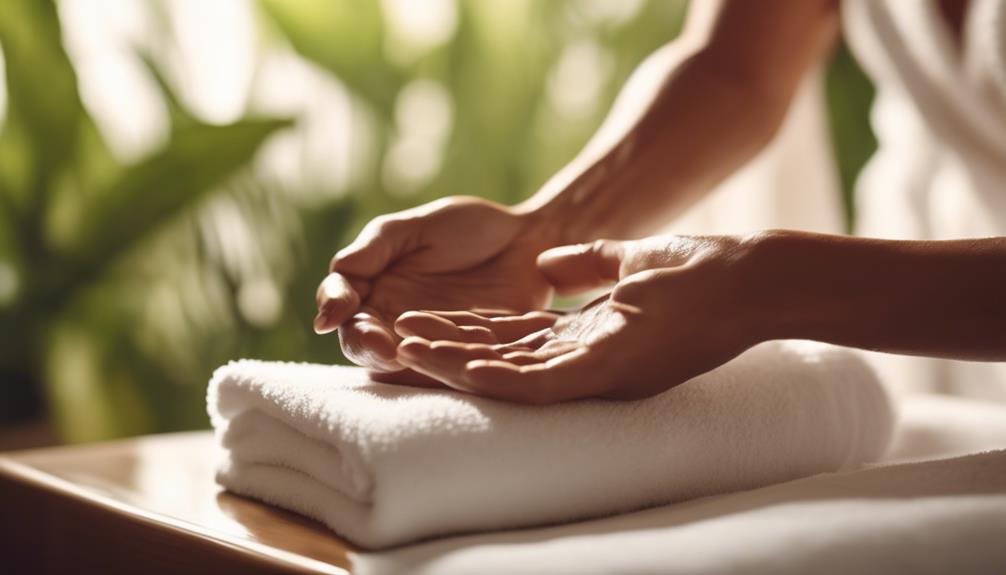
Applying tanning lotion evenly and liberally guarantees you achieve a consistent tan while focusing on dry areas for ideal results.
Start by exfoliating your skin to remove dead cells, which helps the lotion adhere better. Use a quarter-sized amount of lotion, warming it in your hands before application.
Work in sections, beginning with larger areas like your arms and legs, then move to smaller spots like your face and neck. Remember to pay extra attention to elbows, knees, and ankles, as they tend to absorb more product.
Allow 5-10 minutes for the lotion to absorb before stepping into the tanning bed. Reapply as necessary during your session to maintain an even tan and maximize your results.
Skin Types Considerations
Understanding your skin type is essential for selecting the right tanning lotion to achieve the best results without irritation. By identifying your skin's characteristics, you can choose a product that enhances your tanning experience.
| Skin Type | Recommended Lotion Type | Special Considerations |
|---|---|---|
| Sensitive Skin | Natural Formulas | Look for hypoallergenic options. |
| Oily Skin | Accelerators | Avoid overly greasy products. |
| Dry Skin | Moisturizing Lotions | Choose lotions with added hydration. |
| Normal Skin | Bronzers or Accelerators | Regular reapplication for ideal tan. |
Pros and Cons
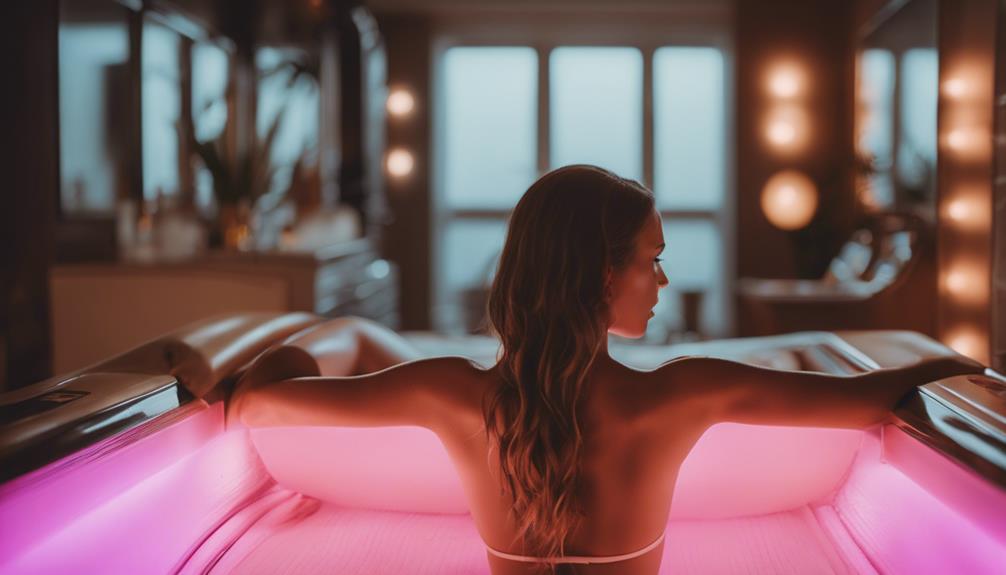
Choosing the right tanning lotion involves weighing the pros and cons to guarantee you get the best results for your skin type.
On the plus side, tanning lotions can enhance your tanning speed, hydrate your skin, and provide nourishing ingredients, making your experience more enjoyable. The pleasant fragrances can also elevate your mood while tanning.
However, be aware of potential downsides. Some lotions may stain your clothing or leave a sticky residue on your skin. Additionally, rapid results can increase the risk of sunburn if you're not careful.
It's crucial to find a balance between the benefits and drawbacks to make certain a safe and effective tanning experience that suits your needs.
Market Trends
In recent years, you've likely noticed a shift toward natural ingredients and cruelty-free products dominating the tanning lotion market, reflecting consumers' growing preferences for healthier and more ethical options.
Brands are increasingly incorporating organic and vegan formulas, such as Ed Hardy Coconut Kisses, to cater to this demand. You'll also find a surge in tropical scents that enhance the tanning experience.
Price comparisons have become vital as shoppers seek the best deals without sacrificing quality. Additionally, customer feedback plays a significant role in shaping product offerings, helping brands fine-tune their formulations based on real user experiences.
Staying updated on these trends will guarantee you select the best lotion for your tanning needs.
Safety Precautions
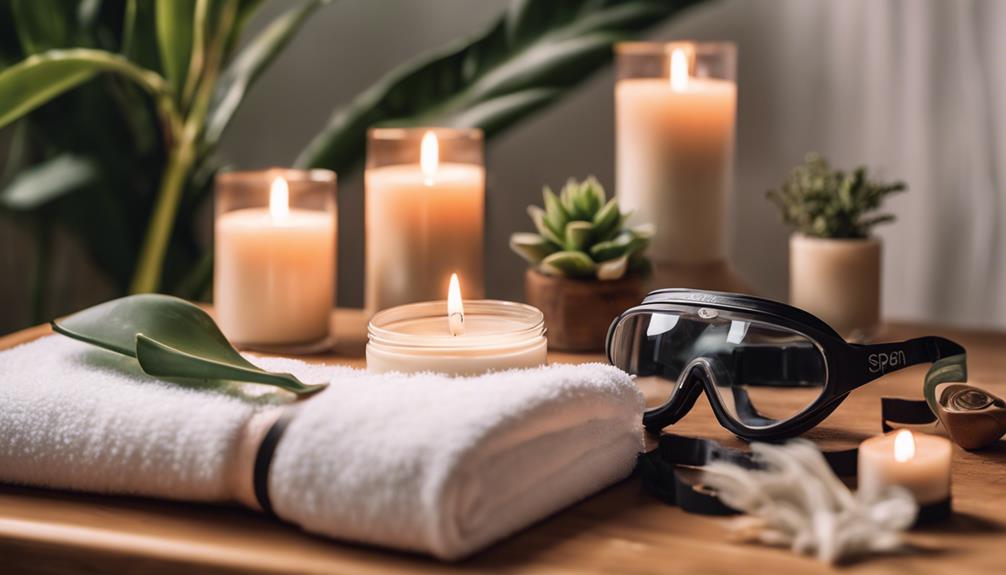
Prioritizing safety is essential when using tanning lotions to guarantee a positive experience and protect your skin.
Before you start, consult a dermatologist if you're unsure about your skin's sensitivity to tanning products.
Always avoid overexposure to UV rays—stick to recommended tanning schedules to prevent burns.
Keep an eye on your skin during sessions; if you notice any irritation or adverse reactions, discontinue use immediately.
It's also vital to apply the lotion evenly and liberally for best results.
Finally, stay hydrated before and after tanning to maintain skin health.
Aftercare Tips
After taking safety precautions, focusing on aftercare is essential for maintaining your tan and keeping your skin healthy.
Start by moisturizing your skin immediately after tanning to lock in hydration and extend your glow. Look for lotions specifically designed for post-tan care, as they often contain soothing ingredients like aloe vera and coconut oil.
Avoid hot showers or baths for at least 24 hours, as they can strip your tan. Instead, opt for lukewarm water and mild soaps.
Stay hydrated by drinking plenty of water, which helps maintain skin elasticity.
Finally, consider using a gradual tanning lotion to enhance and prolong your color.
With these aftercare tips, you can enjoy a stunning tan while keeping your skin nourished and vibrant.
Frequently Asked Questions
How Do Tanning Lotions Affect the Longevity of My Tan?
Tanning lotions enhance your tan's longevity by moisturizing your skin and providing essential nutrients. They promote even color development and help prevent dryness, ensuring your tan lasts longer and looks vibrant while protecting your skin.
Can I Use Tanning Lotion Without a Tanning Bed?
You can use tanning lotion without a tanning bed—imagine achieving that sun-kissed glow while lounging on your couch! Just apply it evenly and bask in natural sunlight or enjoy a self-tanning session.
Are Tanning Lotions Safe for All Skin Types?
Tanning lotions aren't universally safe for all skin types. You should check ingredients carefully, especially if you have sensitive skin. Consider patch testing and consult a dermatologist if unsure about compatibility with your skin.
What Is the Ideal Time to Tan After Applying Lotion?
You'd think applying lotion means instant tanning, but wait! Give it 5-10 minutes for absorption before you hit the bed. Trust me, patience leads to a more even, radiant glow without any streaks.
Can I Mix Different Tanning Lotions for Better Results?
You can mix different tanning lotions for better results, but be cautious. Combining products may alter their effectiveness or cause skin reactions. Test small amounts first to see how your skin responds before fully committing.
Conclusion
As you plunge into the world of tanning bed lotions, remember that the right product can make all the difference in achieving that sun-kissed glow.
Did you know that nearly 60% of tanners report better results with specialized lotions?
By understanding ingredients, application techniques, and safety precautions, you can elevate your tanning experience while keeping your skin healthy and radiant.
So, gear up and embrace the journey to your perfect tan with confidence!
Lifestyle
Unlock Your Best Tan With Smart Sessions
Incorporate tailored tanning sessions to enhance your glow and discover secrets for maintaining a radiant tan that lasts!

You can access your best tan by tailoring your sessions to your skin type. Start with short sessions and gradually increase their length, keeping in mind that fair skin needs fewer visits than darker tones. Preparing your skin is essential: exfoliate 24 hours prior and hydrate well. After tanning, moisturize immediately to keep your glow vibrant. Aim for regular sessions, but know when to ease back to maintain your color effectively. By understanding your skin and following these steps, you'll achieve a radiant tan. There's more to explore on enhancing your tanning experience and keeping it fresh!
Key Takeaways
- Assess your skin type using the Fitzpatrick Scale to determine optimal tanning frequency for best results.
- Prepare your skin by exfoliating 24 hours prior and arriving makeup-free for even product application.
- Start with short tanning sessions to gauge your skin's response, gradually increasing duration as needed.
- Maintain hydration by drinking water and using a moisturizer before and after tanning to enhance results.
Understanding Your Skin Type
To reveal your best tan, start by identifying your skin type using the Fitzpatrick Scale, which helps you tailor your tanning strategy effectively. This scale categorizes skin into six types based on how easily it burns and tans.
If you have fair skin, you'll want to begin with brief sessions to establish a base tan, while medium skin types can handle slightly longer sessions. Olive skin types can enjoy more frequent sessions, but even darker skin must exercise caution.
Follow the recommended frequencies: fair (1-2 times a week), medium (2-3), olive (3-4), and darker (4-5). Adjust your session duration as your skin adapts to guarantee ideal results without overexposure.
Preparing for Your Session
Exfoliating your skin 24 hours before your tanning session helps eliminate dead skin cells, ensuring a smooth and even tan.
After exfoliation, it's essential to hydrate your skin adequately; dry skin doesn't tan well. Make sure to moisturize regularly leading up to your session to keep your skin in ideal condition.
When you arrive for your tanning session, come with clean, makeup-free skin. This allows for an even application of the tanning product or UV rays.
Avoid using any lotions or oils that might interfere with the tanning process. By following these simple steps, you'll set the stage for achieving that beautiful, bronzed glow you desire.
Preparing properly maximizes your results and enhances your tanning experience.
Managing Tanning Sessions
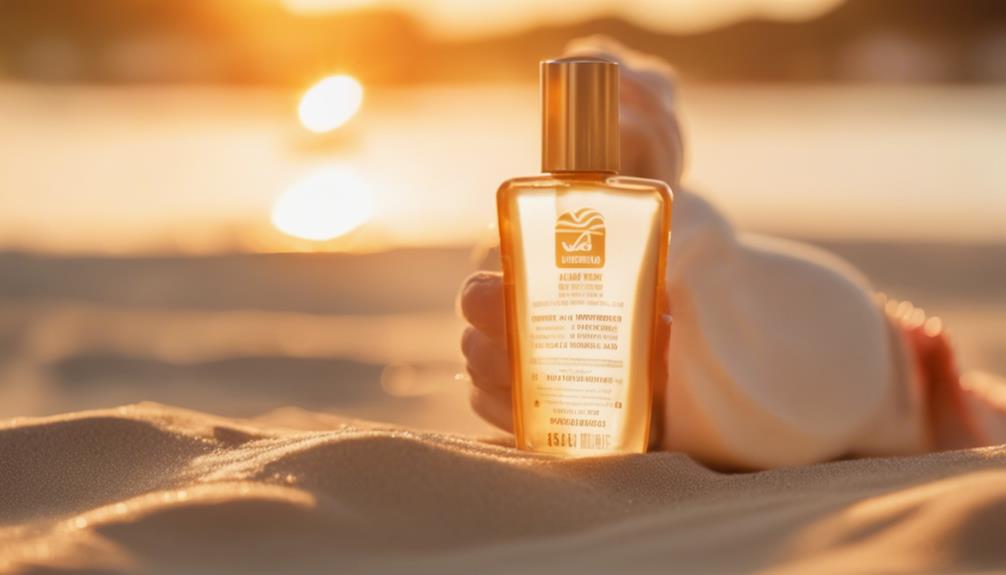
Managing your tanning sessions effectively is essential for achieving a deep and even tan while minimizing the risk of skin damage.
Start with short sessions to gauge your skin's response, gradually increasing the duration as your skin adapts. Aim for a balanced schedule—limit yourself to one session per day.
For initial color development, you might need 3-5 sessions, especially if you have lighter skin. Once you've reached your desired shade, cut back to 2 sessions weekly for maintenance.
Consider alternating tanning beds to benefit from different wavelengths, promoting an even tan and preventing overexposure in certain areas.
Always listen to your skin and adjust your routine as needed to keep it healthy and glowing.
Post-Tanning Care
Applying moisturizer immediately after tanning helps prevent peeling and keeps your skin hydrated.
To maintain that gorgeous glow, incorporate these essential post-tanning care tips into your routine:
- Use a professional tan extender to prolong your tan and enhance its vibrancy.
- Stay hydrated by drinking plenty of water; it's vital for keeping your skin looking its best.
- Avoid hot showers or baths for the first 24 hours post-tan to preserve your color.
Health and Safety Tips
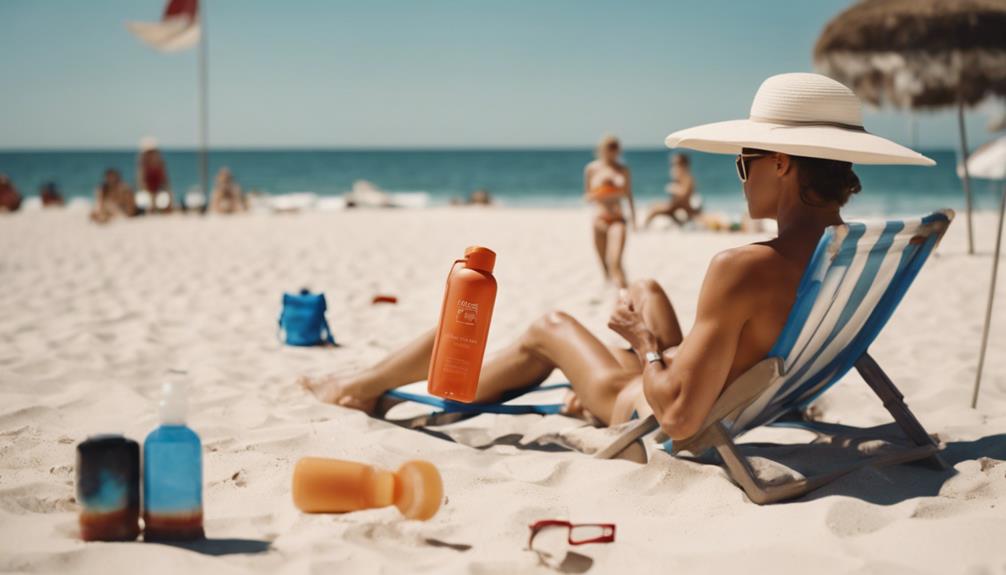
Understanding your skin's limits is essential to enjoying a safe and effective tanning experience. Always start with short tanning sessions to gauge how your skin reacts.
If you have fair skin, limit your sessions to 1-2 times a week, while darker skin types can go up to 4-5 times. Hydration is key—drink plenty of water and use a good moisturizer before and after tanning.
Rotate your position during sessions to avoid uneven tan lines. Keep an eye on your skin; if you notice any irritation or redness, give it a break.
Above all, patience is crucial; gradual exposure leads to the best results without damaging your skin. Stay informed about safety practices for a healthier tanning experience.
Frequently Asked Questions
How Can I Tell if a Tanning Bed Is Safe?
To determine if a tanning bed's safe, check for recent certifications, guarantee it's well-maintained, and confirm the bulbs are functioning properly. You should also read reviews and ask staff about their safety practices.
What Are the Signs of Overexposure to UV Rays?
Signs of overexposure to UV rays include redness, swelling, blistering, and peeling skin. You might also experience discomfort, fever, or chills. If you notice these symptoms, it's essential to minimize further sun exposure immediately.
Can I Tan if I Have a Skin Condition?
You can tan with a skin condition, but it's essential to consult your dermatologist first. They'll help you understand any risks and recommend safe tanning practices tailored to your specific needs. Stay cautious!
How Long Does a Tan Typically Last?
A tan typically lasts about 7 to 10 days, depending on your skin type and care. Moisturizing and exfoliating can help extend its life, while sun exposure can fade it more quickly.
Are There Any Foods That Enhance Tanning Results?
Eating foods rich in carotenoids, like carrots, can enhance your tan. For instance, when you add these to your diet, you might notice a deeper, more golden hue in your skin after tanning sessions.
Conclusion
As you bask in the sun's warm embrace, remember that your journey to the perfect tan is a blend of care and knowledge.
With your skin glowing like golden sand, you'll revel in the beauty of your hard work.
Embrace each session, savoring the gentle warmth that deepens your hue, and don't forget to nourish your skin afterward.
With every step, you're not just tanning; you're crafting a radiant, sun-kissed masterpiece that shines with confidence.
Lifestyle
Tanning Safely: Tailor Your Session Strategy
How to achieve a beautiful tan while minimizing risks—discover essential strategies tailored to your skin type for safe tanning!

Tanning safely means you need to tailor your session strategy based on your skin type. First, identify where you fall on the Fitzpatrick Scale. For Types I and II, keep sessions to 5-10 minutes, while Types III to V can go slightly longer. Always allow at least 48 hours between sessions to let your skin recover. Prioritize hydration and use sunscreen to protect against UV damage. Be mindful of any skin reactions—stinging or redness indicates it's time to adjust. By following these tips, you can achieve a healthy tan while minimizing risks. More insights await you on fine-tuning your technique!
Key Takeaways
- Identify your skin type using the Fitzpatrick Scale to customize tanning sessions and minimize the risk of burns.
- Start with shorter tanning sessions, especially for fair skin types, and gradually increase duration as your skin adapts.
- Space out tanning sessions by at least 48 hours to allow for skin recovery and prevent overexposure.
- Hydrate and exfoliate before tanning to maintain skin health and ensure an even tan application.
Understanding Skin Types
Understanding your skin type is essential for customizing a safe tanning plan that minimizes risks and maximizes results. The Fitzpatrick Scale classifies skin from I to VI, helping you identify how your skin reacts to UV exposure.
If you have Type I skin, you burn easily and should avoid direct sunlight. Type II skin can tan, but you need to start with cautious, gradual exposure.
Knowing your skin type allows you to tailor your tanning sessions, ensuring you don't overdo it and risk irritation or burns. When indoor tanning, be aware of how your skin responds to UV light, and adjust your schedule accordingly.
This knowledge empowers you to achieve a beautiful tan while keeping your skin safe and healthy.
The Role of Melanin
Melanin plays an essential role in tanning by providing your skin with natural protection against sun damage when exposed to UV light.
When you spend time in the sun or a tanning bed, your melanocytes kick into gear, producing melanin in response to UV exposure. This process not only helps darken your skin but also enhances your skin's defense against harmful rays.
Gradual exposure is key; it allows your skin to properly oxidize melanin, leading to a deeper, more even tan.
Remember, the specific UV rays emitted by indoor tanning equipment can vary, so following guidelines is vital to respect your skin's sensitivity and avoid any adverse reactions.
Your skin's health should always come first.
Session Frequency and Duration

To achieve a safe and effective tan, it is vital to customize the frequency and duration of your tanning sessions based on your skin type and sensitivity. Start with shorter sessions, especially if you have fair skin, and gradually increase as your skin adapts. It is important to allow at least 48 hours between sessions for skin recovery. Here's a quick reference table to help you determine session frequency and duration:
| Skin Type | Session Duration |
|---|---|
| Type I & II | 5-10 minutes |
| Type III | 10-15 minutes |
| Type IV & V | 15-20 minutes |
Consult facility staff for personalized recommendations, ensuring you achieve your desired tan safely. Remember, patience is key!
Preventing Overexposure
Preventing overexposure during tanning is essential for maintaining skin health and avoiding burns.
Start your tanning sessions with shorter durations; this allows your skin to adapt to UV exposure gradually.
Always space out your sessions, ideally waiting at least 48 hours between them, to give your skin time to recover and build melanin.
Avoid multiple sessions in a single day, as this increases your risk of burns and long-term damage.
Pay attention to how your skin reacts; if you notice stinging or redness, it's a signal to adjust your exposure time.
Healthy Tanning Practices

Maintaining healthy tanning practices goes hand in hand with preventing overexposure, ensuring your skin stays protected while you achieve that desired glow. Implementing a balanced routine is key. Follow these tips for ideal results:
| Practice | Importance | Frequency |
|---|---|---|
| Hydrate | Keeps skin moisturized | Daily |
| Exfoliate | Promotes even tan application | 24 hours before |
| Use Sunscreen | Protects against UV damage | Every session |
| Apply Tan Extenders | Prolongs tan duration | After each session |
| Monitor Skin Reaction | Adjust tanning practices accordingly | After each session |
Frequently Asked Questions
What Should I Wear During My Tanning Sessions?
During your tanning sessions, wear comfortable, minimal clothing to expose as much skin as possible. Consider using swimwear or special tanning apparel to achieve an even tan while protecting areas you don't want to darken.
Can I Use Sunscreen While Tanning Indoors?
While you're channeling your inner beach bum, it's best to skip sunscreen during indoor tanning. It blocks UV rays, preventing melanin production. Instead, prioritize gradual exposure for that sun-kissed glow without compromising skin health.
How Do I Know When to Stop Tanning?
You'll know to stop tanning when your skin starts showing signs of redness, stinging, or discomfort. Pay attention to your body's signals and adjust your sessions to prevent overexposure and potential skin damage.
Are There Any Foods That Enhance Tanning Results?
Yes, certain foods can enhance tanning results. Foods rich in carotenoids, like carrots and sweet potatoes, boost melanin production. Staying hydrated and consuming antioxidants also helps keep your skin healthy while you tan.
How Can I Even Out Tan Lines?
To even out tan lines, exfoliate the area gently, then apply a self-tanner to the lighter spots. Gradually build color by using a gradual tanning lotion, ensuring an even and natural-looking tan over time.
Conclusion
To sum up, safe tanning is all about knowing your skin and making informed choices.
By understanding your skin type and respecting its limits, you can enjoy the sun without compromising your health.
Isn't it worth taking the time to develop a personalized tanning strategy that prioritizes your skin's well-being?
Remember, a beautiful tan should not come at the cost of your skin's health.
Embrace these practices, and you'll glow confidently while keeping your skin safe.
Lifestyle
Protect Your Skin: Tanning Bed Dangers Revealed
Discover the hidden dangers of tanning beds and learn how to safeguard your skin from serious risks that could change your life forever.

Tanning beds might seem like a quick way to achieve a bronzed look, but they pose serious risks to your skin. These beds emit harmful UV rays that elevate your chances of developing skin cancer, especially melanoma, by a staggering 75% if you're under 20. Plus, they contribute to premature aging, leaving your skin damaged and prone to issues like redness and peeling. The myth that a base tan protects you is just that—a myth. Choosing safer alternatives or preparing your skin properly can help you avoid these dangers. Stick with us to discover how to protect your skin effectively.
Key Takeaways
- Tanning beds significantly increase the risk of skin cancer, particularly melanoma, by 75% for users under 20 years old.
- UVA rays from tanning beds damage DNA, accelerating skin aging and increasing cancer risk.
- The myth of a "base tan" is misleading—tanning beds cause more skin damage instead of providing protection.
- Overexposure can lead to immediate skin issues such as redness, peeling, and tenderness.
Health Risks of Tanning Beds
Tanning beds pose serious health risks, considerably increasing your chances of developing skin cancer, especially melanoma, if you're under 20. Statistics show a staggering 75% increased risk for young adults using these beds.
The UVA rays emitted damage your DNA, paving the way for cancer and causing premature aging. You might believe that a base tan offers protection, but that's a myth; it only exacerbates skin damage.
Overexposure can lead to immediate skin issues like redness, tenderness, and peeling. It's essential to recognize that your skin is the body's largest organ and needs careful treatment.
Prioritizing awareness of these risks can help you make informed choices about tanning and protect your skin's long-term health.
Myths About Tanning
Many people hold misconceptions about tanning, believing it to be a harmless way to achieve a bronzed look without considering the serious risks involved.
One common myth is that tanning beds provide a safe base tan, but in reality, they only increase your skin damage and cancer risk.
Another misconception is that tanning helps with vitamin D absorption, yet the UV exposure from tanning beds does more harm than good.
Many think that they can tan safely without proper precautions, but overexposure leads to painful burns and long-term skin issues.
Finally, some assume that a darker tan is a sign of health, when it actually signals skin stress and damage.
It's time to debunk these myths and prioritize skin health.
Safety Guidelines for Users

Following proper safety guidelines can greatly reduce the risks associated with tanning bed use.
Limit your sessions according to the manufacturer's recommendations to avoid skin damage.
Always wear FDA-approved protective eyewear that fits snugly to shield your eyes from harmful UV rays.
Before you tan, ask about the salon's cleaning protocols to guarantee the beds are properly disinfected; using disposable covers can enhance hygiene.
It's wise to consult a dermatologist prior to starting tanning sessions, particularly if you have specific skin concerns.
Keep track of your skin's response to tanning and be alert for signs of overexposure, like redness or peeling.
Prioritizing these safety measures helps protect your skin while enjoying the tanning experience.
Alternatives to Tanning Beds
Safe alternatives to tanning beds, like self-tanning lotions and sprays, let you achieve a bronzed look without the harmful effects of UV exposure.
You can opt for professional spray tans for an instant glow or choose gradual tanning lotions that build color over time. If you need a quick fix, bronzing powders can deliver immediate results.
Using sunless tanning products containing DHA is a safer choice compared to traditional methods.
Remember, it's also essential to emphasize your natural skin tone by maintaining proper skincare and consistently applying sunscreen.
With these alternatives, you can enjoy a beautiful tan while prioritizing your skin's health and avoiding the long-term risks associated with tanning beds.
Pre-Tanning Skin Preparation
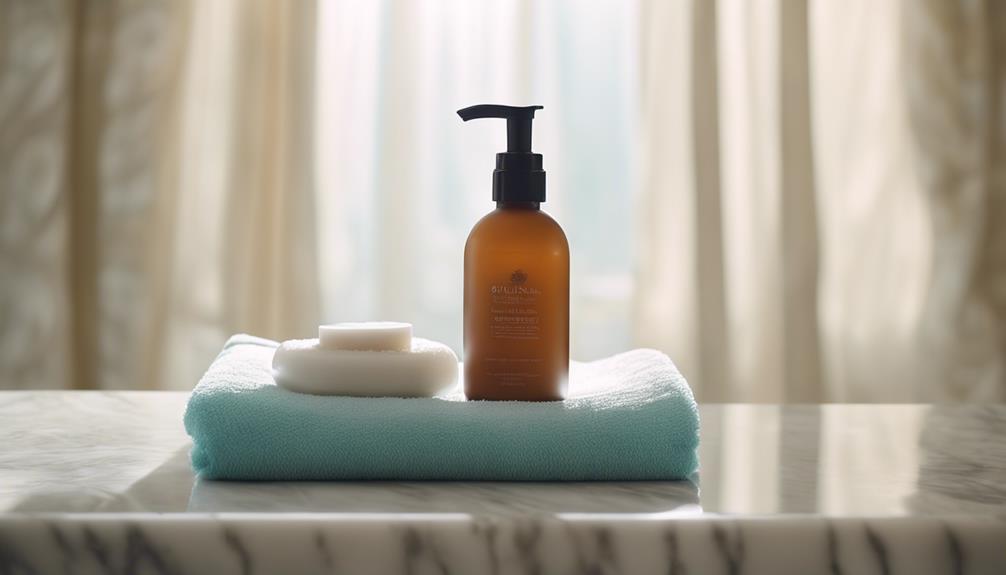
Preparing your skin for tanning involves exfoliating to confirm an even color and moisturizing to prevent dry patches that could affect the final result. Start by exfoliating your skin gently, removing dead cells for a smooth canvas. Next, apply a good moisturizer, focusing on areas prone to dryness like elbows and knees. Avoid using scented or oily products before tanning, and make certain to shave or wax at least 24 hours prior to your session for ideal results.
| Step | Action | Notes |
|---|---|---|
| Exfoliate | Use a gentle scrub | Focus on rough areas |
| Moisturize | Apply a hydrating lotion | Avoid oils and fragrances |
| Prep Timing | Shave or wax 24 hours in advance | Confirms skin is smooth |
Choosing Safe Tanning Products
When it comes to selecting tanning products, prioritize those designed to minimize skin damage while providing a natural-looking glow.
Look for self-tanning lotions and sprays that contain DHA, which safely darkens your skin without the risks associated with UV exposure. Gradual tanning lotions allow you to build color over time, giving you better control over your desired shade.
Always choose bronzers that match your skin tone for the most natural appearance, and opt for matte finishes to avoid excessive shine.
Remember to test products in natural light to guarantee an even application. Using tanning mitts can help achieve a streak-free look, making your tanning routine safer and more effective.
Your skin will thank you!
Recognizing Overexposure Symptoms
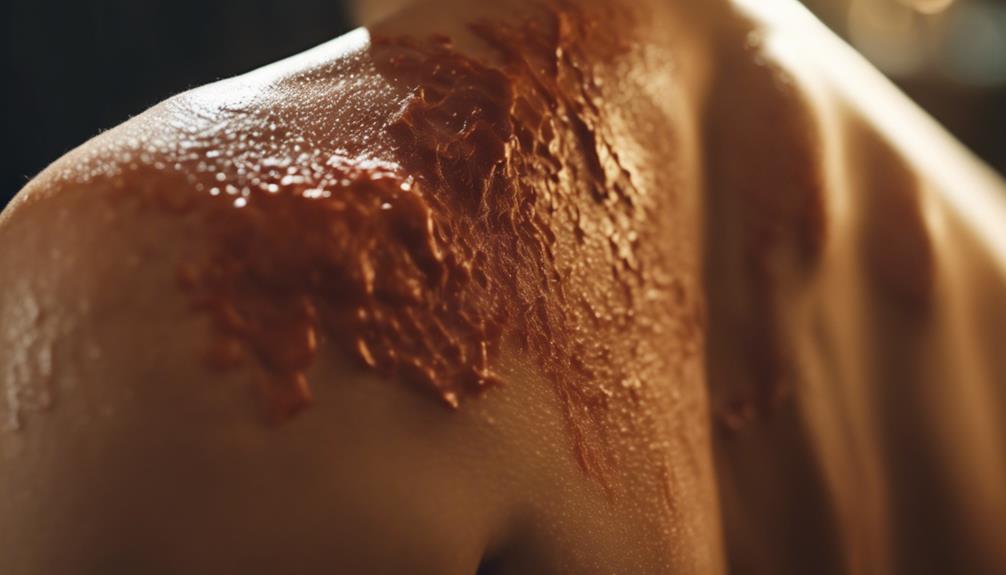
Recognizing the symptoms of overexposure to UV rays is essential for maintaining healthy skin and preventing long-term damage.
If you notice redness, tenderness, or a burning sensation on your skin after a tanning session, it's a clear sign you've overdone it.
Peeling skin indicates your body is trying to heal from the damage, while dizziness can signal more severe reactions.
Don't ignore these symptoms; they're your body's way of telling you to take a break.
To protect your skin, keep track of how often you tan and limit your sessions.
Always prioritize skin health over a temporary glow, and consider alternatives like self-tanners for a safer, healthier approach to achieving that bronzed look.
Frequently Asked Questions
How Often Should I Get Skin Checks After Using Tanning Beds?
You should get skin checks at least once a year after using tanning beds. If you notice any changes or new moles, see a dermatologist sooner to guarantee your skin stays healthy and protected.
What Are the Long-Term Effects of Tanning Bed Use on Skin Health?
Tanning bed use can lead to long-term skin damage, including premature aging, increased risk of skin cancer, and DNA damage. You should consider safer alternatives to protect your skin's health and appearance over time.
Can Tanning Beds Provide Any Benefits Beyond Cosmetic Tanning?
Tanning beds might seem like a quick fix, but they don't offer real benefits beyond cosmetic tanning. Instead of seeking a temporary glow, consider healthier alternatives that protect your skin and overall well-being.
Are There Specific Skin Types More Susceptible to Tanning Bed Damage?
Yes, certain skin types, especially fair or sensitive ones, are more susceptible to tanning bed damage. If your skin burns easily or has a history of issues, you should be particularly cautious about using tanning beds.
How Do Tanning Beds Compare to Natural Sunlight Exposure in Terms of Risk?
Tanning beds and natural sunlight both expose you to harmful UV rays, increasing skin cancer risk. However, tanning beds often emit more concentrated UVA rays, heightening the danger. Consider safer alternatives for your skin's health.
Conclusion
In your quest for that perfect tan, it's easy to overlook the risks of tanning beds.
Coincidentally, while you might think you're boosting your glow, you could be increasing your chances of skin cancer considerably.
Remember, prioritizing your skin health today could mean a brighter, safer future.
Instead of artificial tanning, consider sunless options or natural methods that keep your skin radiant without the dangers.
Protect yourself—your skin will thank you!
-

 Vetted2 months ago
Vetted2 months ago14 Best Personalized Father's Day Gifts for Your Husband – Show Him You Care
-

 Alfresco1 month ago
Alfresco1 month agoAlfresco Stacker Doors: Seamless Indoor-Outdoor Living!
-

 Craft and Textiles3 months ago
Craft and Textiles3 months ago15 Best Places to Buy Appliances for Your Home – Top Retailers Reviewed
-

 Decorative Throws3 months ago
Decorative Throws3 months agoIs It Better to Dry Clean Blankets?
-

 Tableware and Dining Accessories3 months ago
Tableware and Dining Accessories3 months agoWhat Is the Meaning of the Word Tableware
-

 Tableware and Dining Accessories3 months ago
Tableware and Dining Accessories3 months agoWhat Is the Hindi Meaning of Tableware
-

 Craft and Textiles3 months ago
Craft and Textiles3 months ago15 Best Cordless Mowers for Effortless Lawn Care – Top Picks of 2024
-

 Yarn3 months ago
Yarn3 months agoIs Yarn Natural or Manmade? Unravel the Truth






















